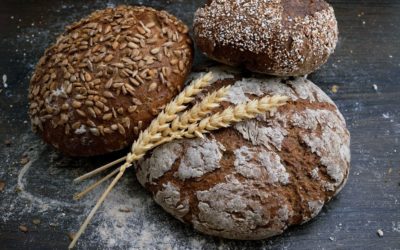The prevalence of type 2 diabetes, a pathology mainly induced by nutrition is increasing. Invivo studies on rat have demonstrated the interest of n-3 long chains polyunsaturated fatty acids (n-3LC PUFA) and conjugated linoleic acids (CLA) in the diet to improve insulin sensibility. This study investigates the effect of a diet with products (linseed enriched livestock diet products and linseed bread) naturally enriched in n-3 PUFA and CLA 9-cis, 11-trans on glycemic parameters of type 2 diabetics. 44type 2 diabetics were randomised in three parallel groups and followed a particular diet during 100 days.The three diets: diet A (n = 13), enriched in n-3 PUFA via bread, eggs and pastas, diet B (n = 13),enriched in n-3 PUFA and richer in conjugated linoleic acids (CLA) via bread, eggs, pastas, beef meat and dairy products and diet T (n = 18), standard, were otherwise similar in energy (1970 kcal per day) and type of food. The serum value of the ALA is significantly higher for group A and B and the CLA serum valueis significantly higher for the group B only at the end of the study. At the end of the study, fasting insulinemia is lower in group B compared with group A (p = 0,06) and T (p < 0,05) while glycemia does not differ between groups. Insulin resistance is also lower in group B compared with groups A and T, butthe differences do not reach significance (p = 0,08 and p = 0,1 respectively). These results suggest the potential implication of CLA 9-cis, 11-trans in a diet rich in ALA in the improvement of insulin sensitivity.
Key words: type 2 diabetes, nutrition, conjugated linoleic acids
By: Bernard SCHMITT, Constance FERRY, Norohanta DANIEL, Pierre WEILL, Nathalie KERHOAS, Philippe LEGRAND






 Home
Home

